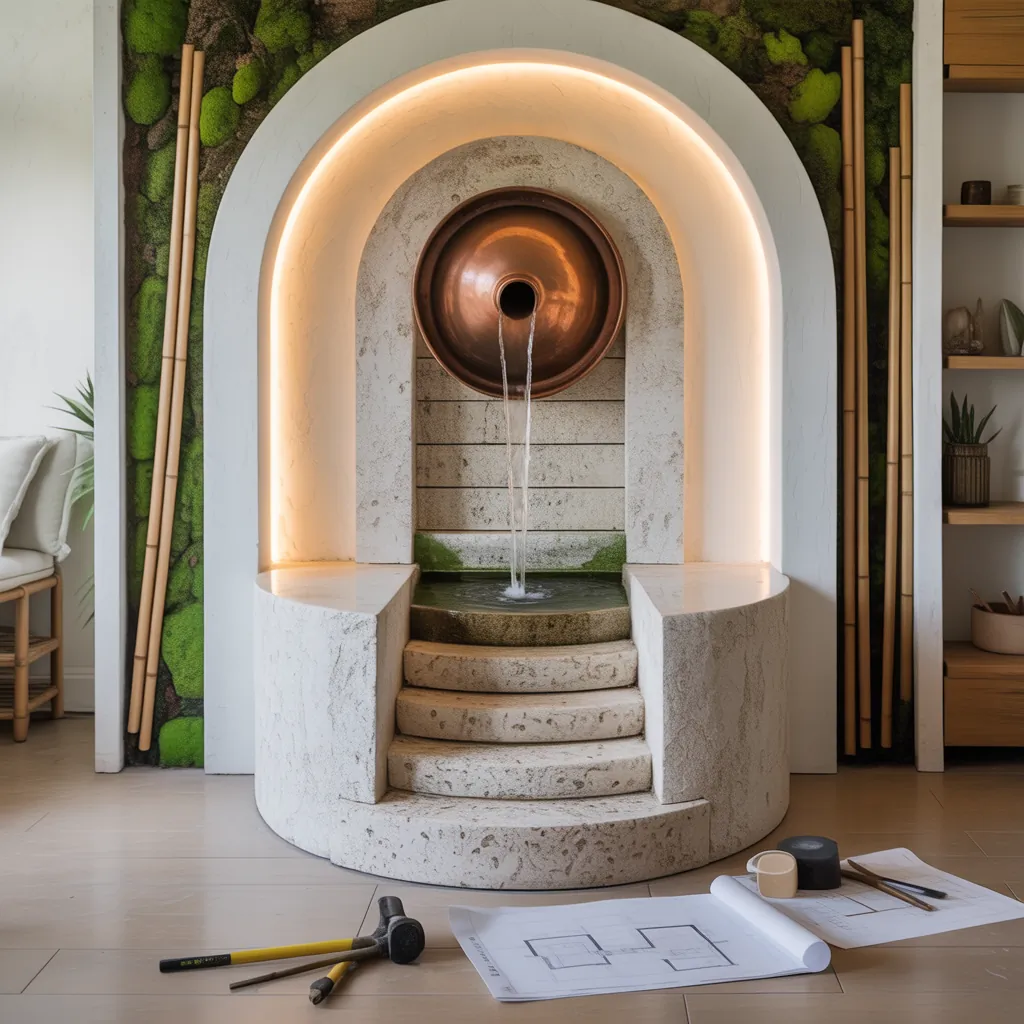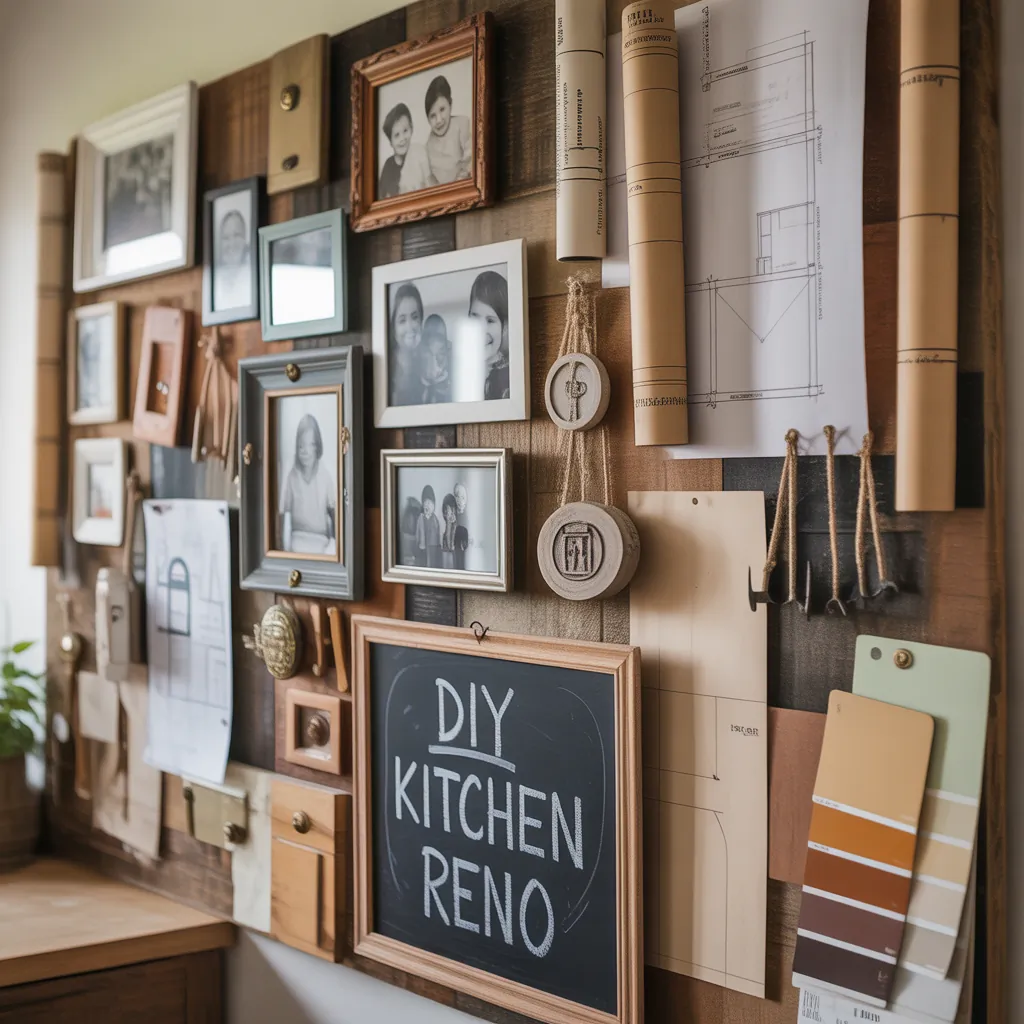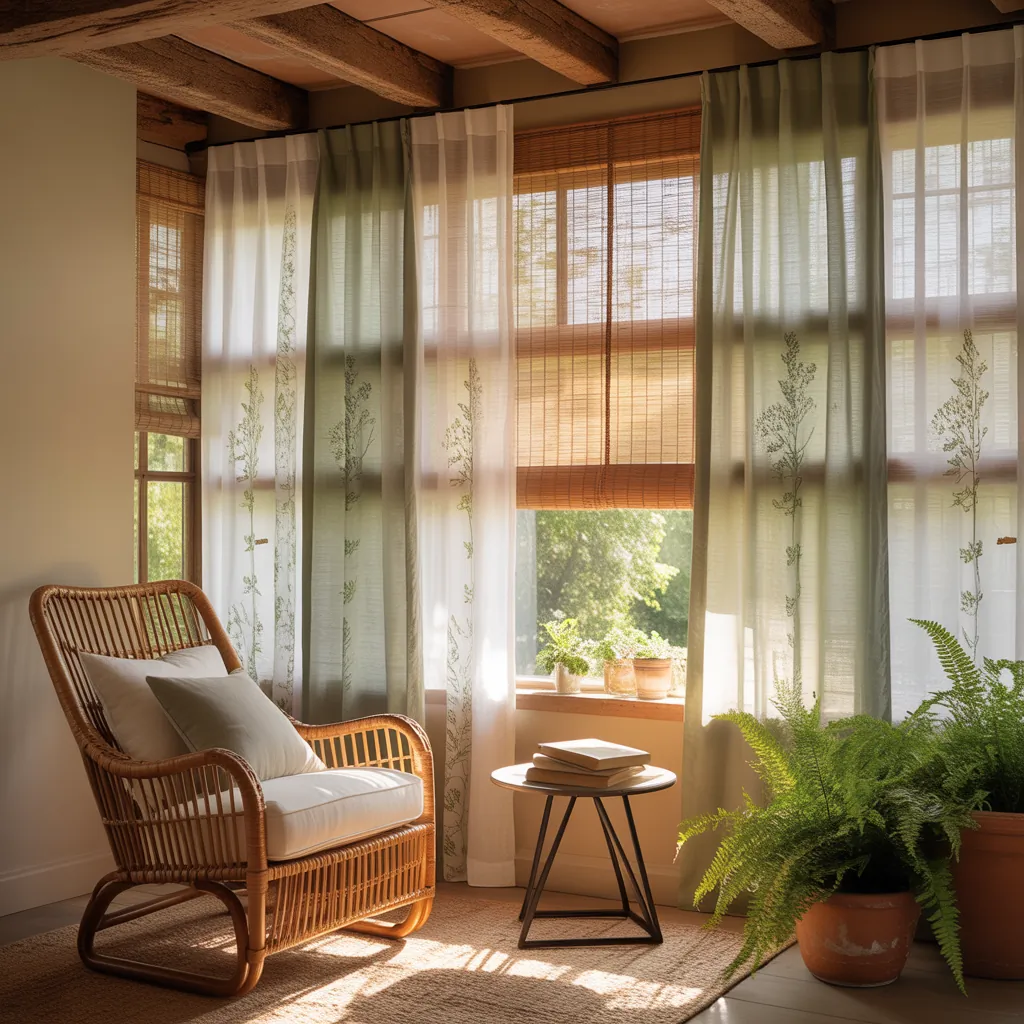Have you ever sat in your living room after a long day and wished your space felt calmer, more luxurious, or simply more “finished”? Maybe your apartment lacks a courtyard, or your house could use a focal point that soothes anxiety and humidifies dry air. If that sounds familiar, indoor fountains are a simple, rewarding way to upgrade a room — and many projects are perfect for a weekend DIY. In this guide you’ll find practical ideas for indoor fountain installations, step-by-step DIY tips, design inspiration, and real-world maintenance advice to help you bring water indoors with confidence.
Why add an indoor water feature?
Indoor water features provide more than ambiance. They:
- Introduce calming white noise and a spa-like atmosphere
- Raise humidity slightly in dry climates, helping plants and breathing comfort
- Create a visual focal point that elevates interior design
- Mask unwanted household noises
Whether you’re looking for ideas for indoor fountain focal points or compact table-top water features, there’s a style to fit every home and budget.
Quick ideas for indoor fountain: styles to consider
- Tabletop fountain: Ceramic bowls, bamboo spouts, or glass tiers for desktops and coffee tables.
- Wall-mounted fountain: A living wall or stone panel that recirculates water vertically, great for hallways and entryways.
- Pondless floor fountain: A recessed basin with gravel cover for a modern, low-splash look.
- Terrarium water feature: A small fountain inside a closed glass terrarium for humidity-loving plants.
- Modern trough fountain: Long narrow basin for mantels or console tables.
- Rustic stacked-stone fountain: Faux or real stone stacked for farmhouse or cottage interiors.
DIY indoor fountain ideas with step-by-step instructions
1. Simple tabletop fountain (beginner)
Materials: ceramic bowl, small submersible pump, vinyl tubing, decorative stones or river rocks, drill with a small ceramic bit (optional).
- Choose a bowl or shallow basin that complements your decor.
- If necessary, drill a discreet hole near the rim for tubing, or thread tubing over the pump and tuck it behind rocks.
- Place the pump on the bottom, connect tubing to the outlet, and arrange stones to hide the pump.
- Fill with water, plug in, and adjust flow. Add battery-operated LED lighting for nighttime ambiance.
Tip: Use distilled water to reduce mineral buildup and change water weekly in closed spaces.
2. Wall-mounted fountain (intermediate)
Materials: waterproof backer board or acrylic panel, pump with higher head, flexible hose, silicone sealant, decorative front veneer (stone, tile, or wood-look panels).
- Select a location near a GFCI-protected outlet and ensure the wall can support the weight.
- Build a shallow reservoir box at the base with the backer board and waterproof seams.
- Attach the decorative panel, run tubing from the pump in the reservoir to the top of the panel, and create a channel for water to sheet down.
- Seal all joints, test for leaks with water, then finish edges with trim.
Tip: Place a liner and access hatch for pump maintenance; consider hiring an electrician if you need new wiring.
3. Pondless indoor fountain for entryways (advanced)
Materials: reinforced basin, pondless pump, reservoir rock, decorative boulders, water-resistant flooring mat.
How it works: Water recirculates from a hidden reservoir through the visible rockscape; because there is no open pond, splash and evaporation are minimized.
Suggestion: Use a professional installer for this style if you’re concerned about weight and waterproofing, especially on upper floors.
Design inspiration: match the water feature to your style
- Minimal Scandinavian: Matte white or concrete basin, gentle sheet flow, neutral stones.
- Zen Japanese: Bamboo spout, smooth river stones, surrounding bonsai or bamboo plants.
- Industrial modern: Polished metal trough, graphite stones, cool LED uplighting.
- Boho cottage: Recycled pottery, trailing houseplants, warm fairy lights.
Placement, safety, and maintenance tips
Placement
- Place near (but not under) electrical outlets; use GFCI protection for safety.
- Keep fountains away from delicate electronics and hardwood floors unless adequately protected.
- Small apartments benefit from tabletop or terrarium designs to avoid humidity issues.
Safety and maintenance
- Clean pumps monthly: unplug, scrub impeller and intake to remove debris and algae.
- Use water treatments designed for indoor fountains or distilled water to slow scale formation.
- Inspect seals and liners yearly to prevent leaks; use waterproof trays or mats when needed.
- If you have pets or children, choose covered or elevated designs to limit access to water.
Budget-friendly shopping and upgrades
- Repurpose thrifted bowls, terracotta pots, or ceramic sinks for DIY basins.
- Starter pump kits are inexpensive and include tubing and adapters — perfect for tabletop fountain projects.
- Upgrade with LED lighting or smart plugs for dimming and scheduling to reduce runtime and evaporation.
Creative finishing touches
- Add aquarium-safe plants around the base for a lush look.
- Use scented diffuser stones or place essential oil diffusers nearby (not in the water) to create a spa-like scent profile.
- Layer small pebbles and decorative glass to customize flow sound — tighter pebble packing produces a softer whisper, larger pebbles create a livelier trickle.
Creative ideas for indoor fountain that work in small spaces
Not every fountain needs a big footprint. Consider vertical wall panels, corner troughs, or even a converted lamp base as a compact water feature. These small indoor fountain ideas are ideal for apartments, home offices, or bathrooms where you want calm without clutter.
Frequently Asked Questions
1. How much does it cost to build an indoor fountain?
Costs vary widely: a basic tabletop fountain can cost under $50 using a small pump and thrifted bowl. Wall-mounted or pondless installations typically start around a few hundred dollars when you factor materials and a quality pump; professional installs can run higher depending on plumbing and waterproofing needs.
2. Will an indoor fountain increase humidity too much?
Most small to medium indoor fountains slightly raise local humidity but are unlikely to cause condensation issues if properly sized and ventilated. In small, poorly ventilated rooms, choose a closed terrarium fountain or run the pump intermittently to manage humidity.
3. What maintenance does an indoor fountain need?
Regular upkeep includes topping off water weekly or as needed, cleaning the pump and basin monthly, and checking seals annually. Using distilled water and occasional non-toxic algaecide reduces scaling and algae growth.
Conclusion — start your indoor fountain project today
Ideas for indoor fountain range from quick tabletop builds to dramatic wall-mounted water features. Pick a style that matches your space, evaluate safety and maintenance needs, and start small if you’re new to water features. Ready to try a DIY indoor fountain this weekend? Browse more detailed guides on our DIY projects page, check inspirational looks for wet areas on our home design ideas page, or learn how to integrate a fountain into your kitchen remodel in kitchen upgrades. Share your plan or ask for feedback — we’d love to see what you create!



